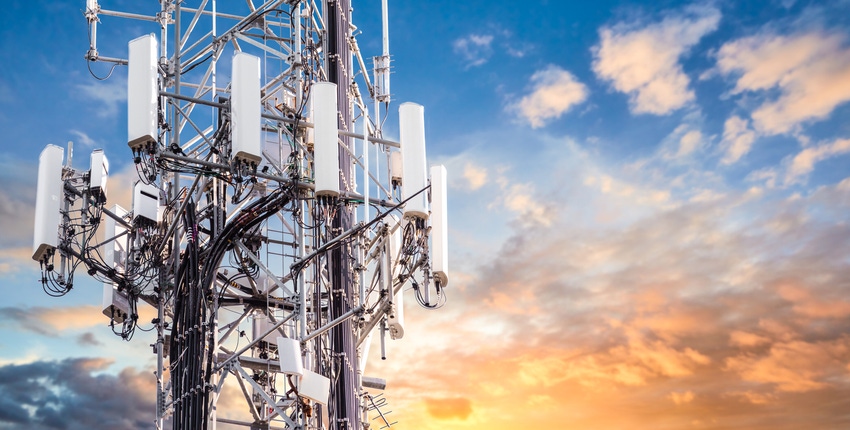Infrastructure site sharing provides an alternative to exclusive self-building but is that enough?
Collaboration with shared network providers enables a diverse cast of organizations to ensure 5G is delivered in the right way, with the right aesthetic, to a standard that meets end user demand and expectations.
May 22, 2023

Telecoms.com periodically invites expert third parties to share their views on the industry’s most pressing issues. In this piece Stefan Schmitt, Group Director, Product and Innovation at BAI Communications explores the merits of shared infrastructure.
Mobile network operators (MNOs) have a growing problem on their hands. 5G rollouts are proving complex and expensive and, as a result, difficult to scale and meet the growing demand for data consumption. Several hundred million people and connected devices are becoming new mobile broadband subscribers every year translating in more and more ‘work’ and ‘play’ connectivity use-cases. Such use cases cast ubiquitous coverage as an expectation of telcos that the industry, frankly, isn’t on track to meet.
Many telcos have looked to the creation of TowerCos or infrastructure ventures in the past to expedite network buildouts and reduce capital expenditure costs. Such collaboration with other network service providers has seen the sharing of infrastructure – and therefore the associated obligations – what forms the backbone of networks.
More infrastructure sharing will be an appealing prospect for many MNOs today. In the context of 5G rollouts, however, legacy approaches to infrastructure site sharing risk delivering the opposite of what such initiatives are meant to achieve – reduced costs, better quality of service and quicker go-to market times for new services. Thankfully there’s an effective, modern alternative to the tried and tested joint venture approach in the form of shared infrastructure, hosted and maintained by neutral providers, that MNOs can tap into to accelerate 5G rollouts without more self-building.
Collaborative projects with such neutral host providers go beyond telcos. Municipalities, transit authorities, and even marquee venue owners are looking at solutions that can boost the mobile coverage in the outdoor and indoor spaces they’re responsible for and, in doing so, bring about positive outcomes like improved mobile user experience for individuals and more seamless connectivity for enterprises. These projects have resulted in expanded fibre network backbones, distributed antenna systems, shared tower sites and installations of versatile small cells – small radio antennas positioned closer to the ground and to customers that are rapidly emerging as a means to densify and improve 5G networks. To put this boom in small cells into perspective, according to IDTechEx, 45 million 5G small cells will be installed by 2031. This is key to much-needed 5G densification in metropolitan areas.
Collaboration with shared network providers enables a diverse cast of organizations to ensure 5G is delivered in the right way, with the right aesthetic, to a standard that meets end user demand and expectations.
For MNOs, it may feel intuitive to view any alternative network rollout as opposition to their own efforts. After all, in the UK the four major network operators are racing to deploy their own small cells in metropolitan areas, and efforts from U.S. operators to date have led to much more market penetration for small cells with the Wireless Infrastructure Association estimating that over 450,000 outdoor small cells were live in the states at the end of 2022. But rigidly sticking to a perspective of “my network VS the rest of the world’s” is a mistake given today’s backdrop of 5G. Scaling up more quickly to meet increased customer demand is expensive and the return on investment in doing so isn’t always forthcoming. MNOs also face difficulties in utilizing their limited 5G spectrum holding to best effect without compromising on network consistency or reach.
Faced with these challenges, MNOs need to recognize that infrastructure ownership is no longer a requirement or source of long-term competitive advantage. Active sharing of infrastructure is the next source of operational efficiency and coverage assurance.
The state of play for today’s network rollouts
The varied roster of players rolling out network infrastructure today says something loud and clear about the traditional telco in 2023. It’s no longer the sole responsibility of the telecoms industry to bring connectivity where it’s most needed. To adapt to emerging connectivity needs and requirements, MNOs need to adjust to this new reality by working with modern, shared infrastructure providers behind the bespoke rollouts that are bringing us closer to truly smarter, connected communities that simplify connectivity to the benefit of citizens and enterprises in complex environments.
To delve into changing connectivity needs and requirements further – it’s no longer acceptable, for example, for a city’s entire transit system to be a ‘not spot’ for mobile coverage. It’s often the case, however, that it’s not possible or viable to serve these systems with traditional, overlapping mobile networks using infrastructure that lacks interoperability. Shared neutrally hosted infrastructure bypasses the problems of potential “over-build” and opens opportunities for connectivity to be more inclusive as shared networks can feasibility support customers of all major network operators in a market without fear or favor.
Learning to love shared infrastructure
For MNOs, working with a shared network infrastructure provider goes beyond simply outsourcing network rollouts. It’s an opportunity to off-load massively time-intensive tasks, from securing access to real estate to dealing with local authorities to applying for required approvals.
MNOs also need to take a long view on collaboration with shared infrastructure players. The customers of shared infrastructure providers are public and private organizations trying to improve connectivity for telcos’ own end users in locations when receiving good signal requires more than existing network coverage. These efforts are admirable and critical if we’re to make “always on”, interconnected, smart communities a reality. After all, the next development of 5G connectivity will be driven by the AI, data analytics and IoT applications layered over the network. But these applications require data, and lots of it. Shared infrastructure that is used by all MNOs, therefore, is going to be a lot more useful for city planners and public organizations to deliver responsive and accurate services going forward.
Infrastructure site sharing initiatives emerged more than a decade ago as a means for MNOs to reduce the capital expenditure tied to mobile network rollouts. The overall sentiment rings true today but the context for rollouts has changed dramatically and MNOs need to adjust their strategies accordingly. Deep sharing of infrastructure, facilitated by reliable third-party providers, is the best way to meet increased demands for data in locations that aren’t best served by traditional mobile networks. When it comes to utilizing shared infrastructure, Franklin D Roosevelt said it best – telcos have nothing to fear except fear itself.
 Stefan Schmitt is Group Director Product & Innovation at BAI Communications, soon to be Boldyn Networks. In this role Stefan is responsible for scaling and innovating BAI Communication’s solutions for mobile networks, connected transport, communities, venues and enterprise private networks. BAI Communications (BAI) is a world leader in shared communications infrastructure, pioneering the future of advanced connectivity.
Stefan Schmitt is Group Director Product & Innovation at BAI Communications, soon to be Boldyn Networks. In this role Stefan is responsible for scaling and innovating BAI Communication’s solutions for mobile networks, connected transport, communities, venues and enterprise private networks. BAI Communications (BAI) is a world leader in shared communications infrastructure, pioneering the future of advanced connectivity.
Get the latest news straight to your inbox. Register for the Telecoms.com newsletter here.
Read more about:
DiscussionAbout the Author(s)
You May Also Like








.png?width=300&auto=webp&quality=80&disable=upscale)


_1.jpg?width=300&auto=webp&quality=80&disable=upscale)


.png?width=800&auto=webp&quality=80&disable=upscale)